Meet the players behind 8 companies pitching green hydrogen projects in N.L.
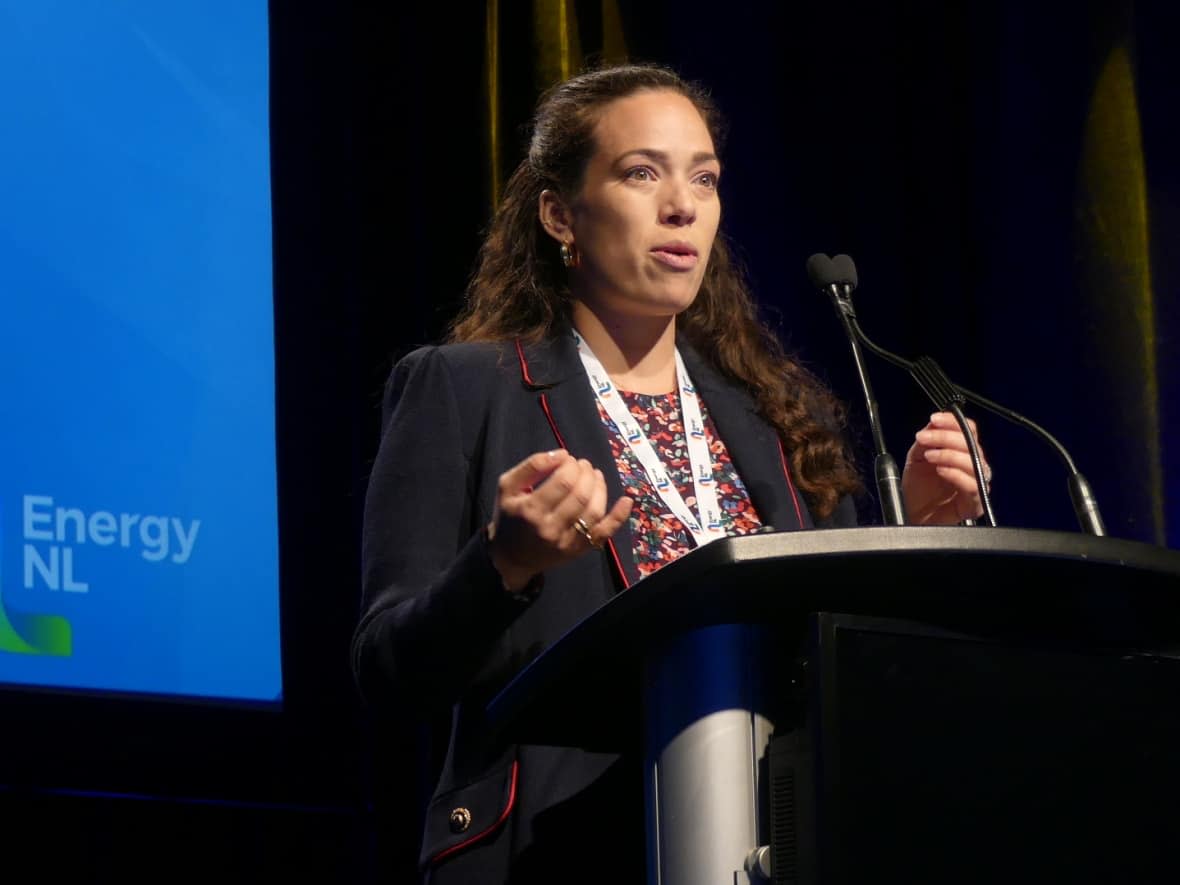
Erika Taugher couldn't walk 10 feet on Tuesday morning without somebody stopping her to chat or exchange business cards. She's been on the conference run lately, explaining her company's lofty goals on green energy to crowds in cities around the globe.
She's the director of renewables at Pattern Energy — a company backed by the Canada Pension Plan investment board and headquartered in San Francisco and Houston. Taugher is in high demand at these conferences, as her company elbows into the green hydrogen space.
"It's winding down now," she said, before gesturing to her pregnant stomach. "Thankfully."
Taugher and executives from seven other companies had five minutes each to make their pitch at the Energy NL conference in St. John's on Tuesday. While details of some projects have been widely publicized, it was a first glimpse at the faces and details behind some others.
Pattern Energy — Argentia
Taugher's company is pitching a two-phase project located in the Port of Argentia. It's different from the others in that the first stage will see windmills constructed on private land owned by the port — meaning it isn't reliant on government approval for access to Crown lands like the other proponents.
The first phase would see 300 megawatts of wind energy, with a 200 megawatt electrolyser to produce hydrogen. The second phase — if access to crown lands is granted — would see capacity increase to 1,000 megawatts of wind and a 750 megawatt electrolyser.
Pattern Energy plans to turn the hydrogen into ammonia to ship it to foreign markets. While it can be turned back into hydrogen to be used for energy, Taugher said a more realistic target right now is using the ammonia for things like fertilizer.
"It's super exciting to think about power generation being fuelled by hydrogen," she said. "Unfortunately, a lot of that is far down the curve. What I've been focused on more recently is ammonia, and its potential uses."
ABO Wind — Come By Chance
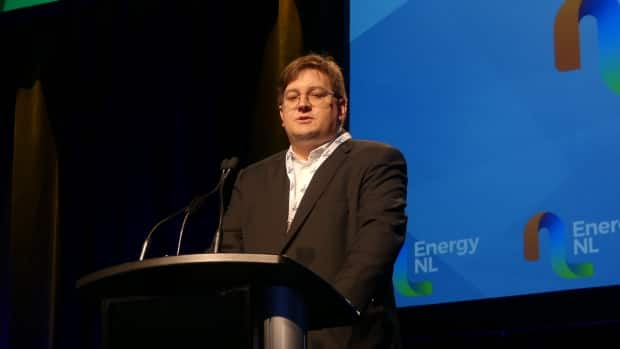
The German company is already a world leader in wind energy, having developed a 514 megawatt facility in Alberta — the largest in Canada.
The company employs over 1,000 employees worldwide, with 22 in Canada and a new office in St. John's. It has partnered with Braya Renewable Fuels, which operates the refinery in Come By Chance.
ABO's goal is to power the refinery with green hydrogen by 2027, start exporting to foreign markets by 2028 and reaching full scale by 2030.
The company's head of hydrogen development, Fabian Hinz, said they have their first LiDAR — light detection and radar — system in place to measure wind, and are in the process of hiring a firm to do a feasibility study.
The company has signed a memorandum of understanding with the Miawpukek First Nation to work together and provide benefits to the Indigenous community. Hinz said it's also vital for them to build and run the project with local workers and suppliers.
"This is not a one-time thing for us. This is an ongoing process."
North Atlantic — Come By Chance
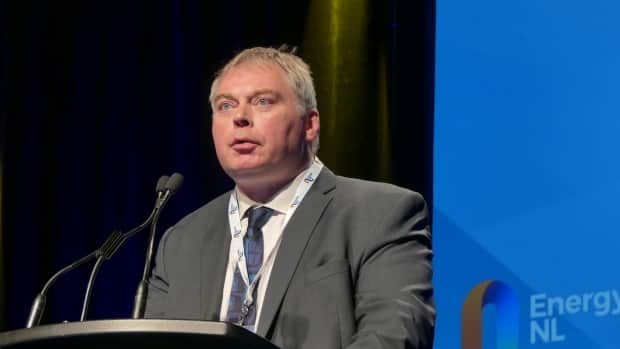
Also vying for business in the Come By Chance region is North Atlantic — a minority owner in the refinery, and owner of much of the infrastructure in the region.
Company president Ted Lomond said he sees the area as an ammonia hub, shipping the product around the world.
"We've got existing marine infrastructure in that area capable of handling very large cargo carriers," Lomond said. "We're doing some investments, and we feel that with these investments we can export up to 10 gigawatts equivalent of ammonia from that facility."
Lomond acknowledged there will be hurdles along the way, and many of the ambitious timelines proposed by companies may not be doable.
"My thought is that not all these projects are going to happen in the way that people think, and they may not happen in the timelines. But they will definitely happen, even if it's a company that buys one of these projects from the receiver at 30 cents on the dollar. It will eventually move it forward."
Brookfield Renewable Partners — Placentia Bay
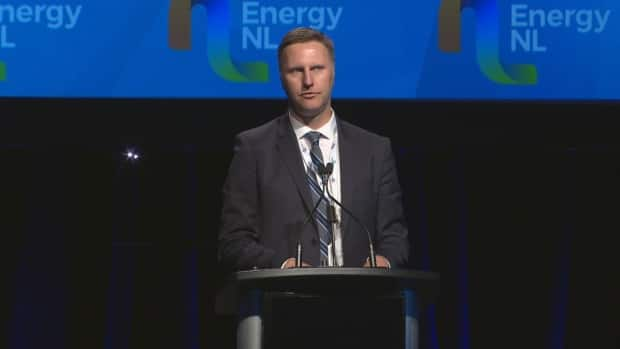
This company has one of the strongest financial backings, being majority owned by Canadian multinational giant Brookfield Asset Management.
Company vice-president Geoff Wright touted the company's $15 billion global transition fund, chaired by former Bank of Canada governor Mark Carney.
While Brookfield Renewables has roots in hydroelectric power, Wright said it sees green hydrogen as a worthy investment as countries around the world look to meet climate targets.
The first phase of the project would see 250 megawatts of wind production with a 240-megawatt electrolyser to produce hydrogen. It would be converted to ammonia and shipped to Germany.
Wright said the company has already purchased a small electrolyser to begin working out the kinks in the process in preparation of scaling up.
Red Earth Energy — Trinity Bay
Stephenville's Peter Walsh is the managing director of the company, which is headquartered in St. John's and Victoria, B.C. It has entered into a partnership with Miawpukek First Nation for the project in Trinity Bay.
The proposal is for 1.1 gigawatts of wind energy in the first phase, and tripling by the final stage, to provide green hydrogen to markets in Europe, Asia and the U.S. The company's equity partner is Australian firm Frontier Impact Group. They've identified several potential projects in Canada according to a previous press release.
Walsh used his five minutes to explore other green energy possibilities, including the conversion of open pit mines in Baie Verte and Labrador into hydroelectric dams where water is pumped from down in the pit to a higher reservoir, and released at times of peak energy demand.
Everwind Fuels — Burin Peninsula
Everwind was founded by Australian Trent Vichie, a private equity veteran who managed a $25-billion fund in the U.S. before retiring in 2020.
Everwind is further ahead than its competitors in several aspects — it has already been granted Crown land and cleared environment assessments on a project in Nova Scotia, and has started some construction.
The company says it already has fully funded development capital, and has invested $160 million in its Nova Scotia and Newfoundland projects so far.
"Our progress in Nova Scotia has massive, massive benefits for our project developing here in Newfoundland," said Sam Imbeault, vice-president of Newfoundland and Labrador operations.
Imbeault said the Burin Peninsula project has the potential for at least two gigawatts of wind energy, along with potential to build wind farms offshore. If approved, he said it's not expected to start construction until next year.
He said Newfoundland and Labrador has the potential to show the world that "the battle for the environment is not completely lost," and that the companies in the room "have a huge responsibility to actually make this stuff real."
EVREC — Exploits Valley
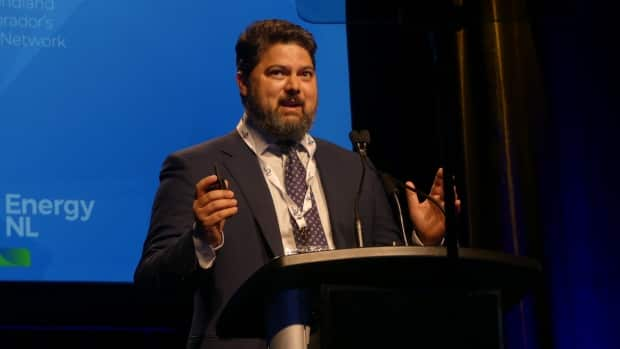
The Exploits Valley Renewable Energy Corporation has plans for about 300 windmills in the Exploits Valley region, with a shipping hub in Botwood.
Executive chairman Ravi Sood said they're the only company bidding in the central region, and have been met with overwhelming positivity from sessions in Botwood, Grand Falls-Windsor and Bishop's Falls.
The company has lofty projections — 2,000 jobs during construction, with 500 permanent jobs and more than 500 indirect jobs throughout the life of the project.
If given the green light, EVREC says construction would begin in 2025 with a goal to reach full operation by 2030.
World Energy GH2 — Port au Port Peninsula/Stephenville
The company spearheaded by Nova Scotia seafood mogul John Risley and Newfoundland telecommunications entrepreneur Brendan Paddick has drawn the most attention so far.
The company plans to create at least three gigawatts of renewable electricity through windmills on the Port au Port Peninsula and Codroy Valley in the final phase, which will deliver 250,000 tonnes of hydrogen per year at a processing plant in Stephenville.
The company's managing director, Sean Leet, touted the project's $50-million investment by a subsidiary of South Korean company SK Group — one of the largest companies in the country.
The total cost of the project is estimated at a whopping $12 billion.
World Energy GH2 already has an environmental assessment submitted to the provincial government, and has a goal to be the first major producer to export ammonia by 2025.


